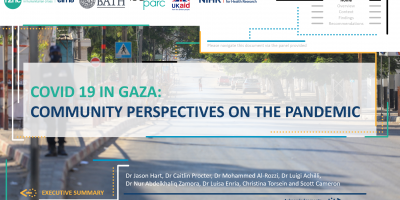Before the onset of the Israel–Hamas conflict in early October, 2023, health-care systems in Gaza were already teetering on the brink, with only 35 hospitals operating at full capacity and a total of 3412 beds catering to a population exceeding 2 million people.1 These data indicate a maximum ratio of 1·55 hospital beds per 1000 individuals across the entire region of the Gaza Strip. The conflict has exacerbated this already critical condition, leading to the closure of hospitals, interruption of supplies to local people, physical damage to hospital infrastructures and transport systems, and evacuation of numerous medical facilities.2
Although the complete extent of the aftermath of this conflict remains unclear, established health-care network models (such as Hassan and Mahmoud’s 2021 model)3 and available data can be used to estimate the destructive effect of the current conflict on Gaza’s health-care system. A hospital functionality model can be informed with collated data on casualties among hospital staff, shortages in essential utilities and medical supplies, and the extent of reported damage. By considering the daily surge of patients, changes in population demographics due to the current forced displacement, and reduced hospital accessibility, we can estimate changes in the patient-to-bed ratio and quantify the surge in patient demands across Gaza, particularly in the south, where the population is currently concentrated.
Existing triage criteria in emergency departments in Gaza,4 which give precedence to war injuries over chronic conditions and non-emergency cases, will further hinder patients with chronic illnesses from accessing vital medical care. The persistence of these conditions has severe implications for public health, leading to a rising toll of preventable fatalities. With the rapid depletion of crucial resources and medical supplies, this dilemma is anticipated to deteriorate consistently in the months ahead. With the continued increase in the number of casualties and damage to infrastructure, the hospital functionality model should be dynamically updated to provide effective policies as the situation continues to change on the ground.



